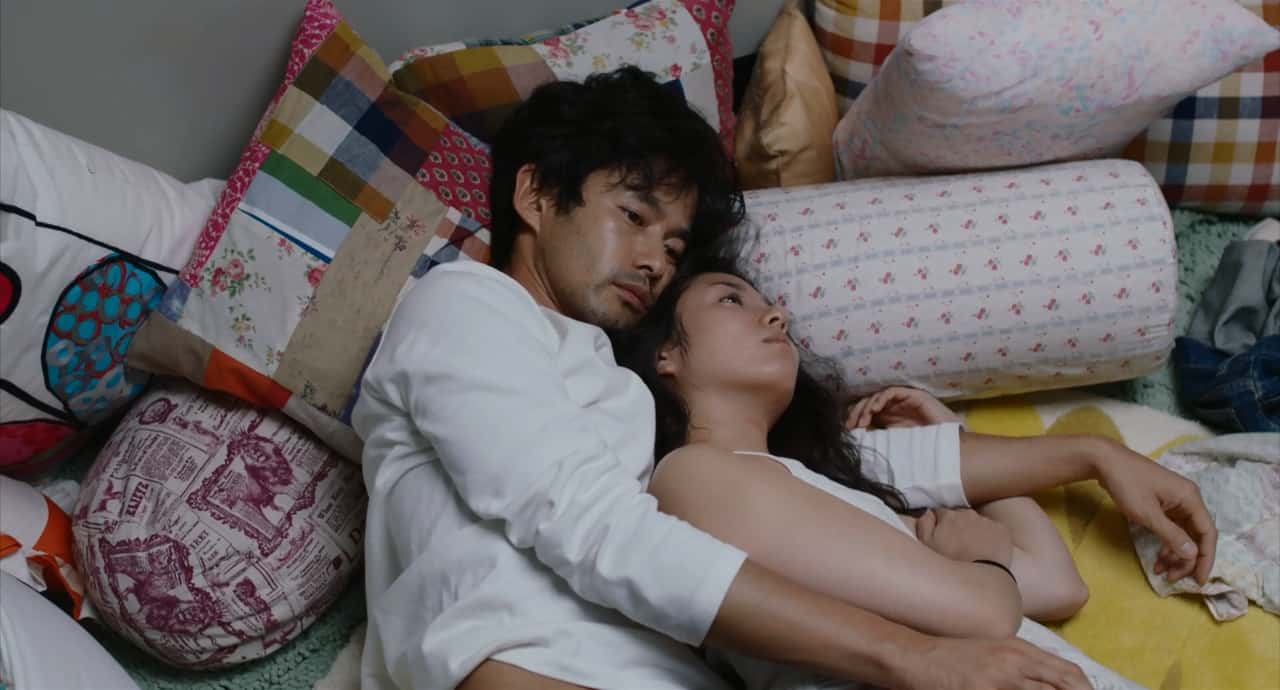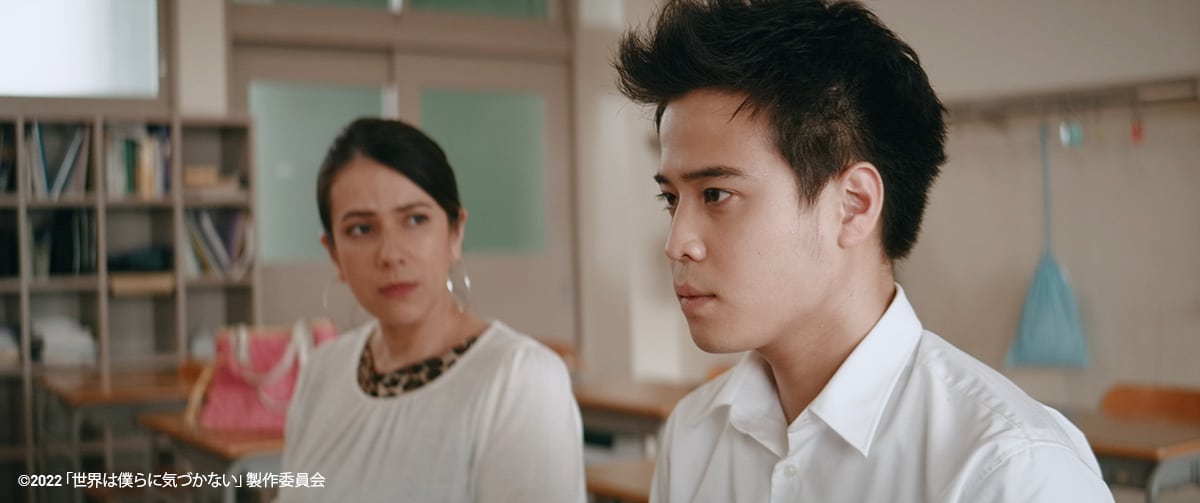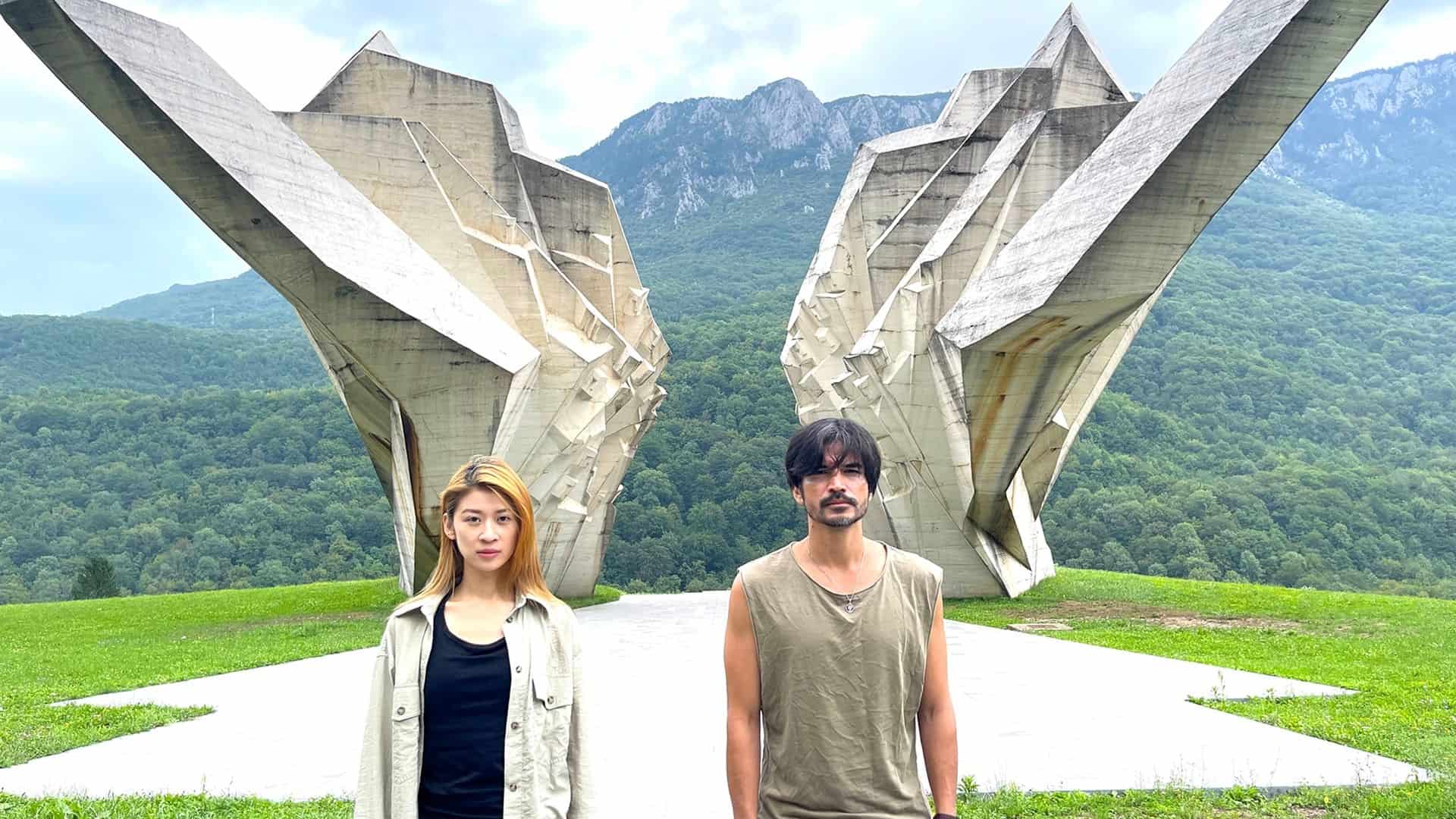Takumi Saito is a well-known Japanese actor, heartthrob and model, notorious for the popular TV-series-turned-movie “Hirugao: Love in the Afternoon” with actress Aya Ueto. Saito's directorial debut “Blank 13” is the tale of an alienated son, longing and struggling to engage one last time with his father, holding on to a handful of memories. The movie is based on the true story of a friend of Saito and it turned out to be a pleasant surprise.
Blank 13 is screening at the Toronto Japanese Film Festival

The title “Blank 13” refers to the 13-year gap in the relationship between Koji (Issei Takahashi) and his father (Lily Franky). An unrepentant gambler and liar, the father had vanished in thin air 13 years before, leaving behind his wife and his two young children. On one hand, his escape from responsibilities had felt like liberation for the family, increasingly harassed by creditors, but it had also forced the mother to work very long hours, night and day to get by, leaving the boys growing up and coping with life completely alone.
Lots of reasons then to be resentful towards this man and it's not a surprise that when Koji's oldest brother (Takumi Saito) announces he has some news from him, nobody really jumps for joy. The man is very ill and has only three months left to live but Koji's mum and brother don't feel like going to see him. They are still hurt and they haven't forgiven him for the way his careless life had deeply affected them. But Koji has got one thing – only one – that still connects him to his father; their shared passion for baseball. Not that his father had dedicated much time to him, but that single time he'd taken the little boy to the stadium, and those few afternoons they'd played catch together are everything that Koji has left of his father and therefore, he decides to go and meet him.

“Blank 13” is unusual in its structure and manages to feel fresh despite a story that it's not particularly original but it is narrated with great empathy and attention to details. Moreover, it stays above any moral conclusions and away from slipping into an easy fatherly-redemption faux-pas.
The narration unravels on a non-linear timeline. It starts in fact with a funny episode at the father's funeral where the sparse attendees are compared to the big crowd of a nearby funeral and it triggers immediately some considerations about the value of a person, measured on the base of the emotional legacy left behind. This introduction is followed by a series of very intense and painful flashbacks, showing some significant episodes of the family and their tribulations with the inconsiderate father. Then, all of a sudden, the title appears, half way through the movie and the narration abruptly changes tone and mood. The few participants to the funeral that we saw at the beginning start spontaneously to recount episodes of their interactions with the deceased (mainly concerning gambling and money), recalling a series of hilarious memories before the eyes of the astonished sons. But discovering a sweet and generous side of their father will only make them feel more distant and estranged from him.

In a recent interview in London the director explained “Blank 13” was filmed in just a week using a mix of techniques that clearly delineate the different dimensions and indeed make it very compelling. All the flashbacks are shot in an elegant saturated photography, inspired by Christopher Doyle's distinct palette and stark imagery; they are vivid, touching and very stylized. On the contrary, the monologues at the funeral have been filmed docu-style, without any rehearsal and only a trace of script. They are in fact a series of long takes of the characters while improvising a jam session of tributes to the late friend. Some of them are comedians, others were casted only on the base of their bizarre demeanor but despite the eccentricity of this directorial choice, the effect is surprisingly organic and amusing. An engaging element is also the abrupt change from drama to comedy, and not the other way around like it more commonly happens; Saito said he was inspired by some Japanese bread rolls that have 2 or 3 different flavors at the same time; unquestionably a curious source of inspiration but – considering the result – utterly agreeable.

Although the film is centered on the father / son dynamics, the mother figure (Misuzu Kanno) is also an extraordinary presence that permeates the whole film. She is rarely seen – mainly from behind – and has very few lines but the whole narration is filtered through her character, indirectly creating a haunting feeling of presence.
Takumi Saito has put together the bitter-sweet “Blank 13” with great maturity and a special care for composition and structure. When asked about his next project, he revealed it will be something totally unexpected and after “Blank 13” we are looking forward to being surprised again.















